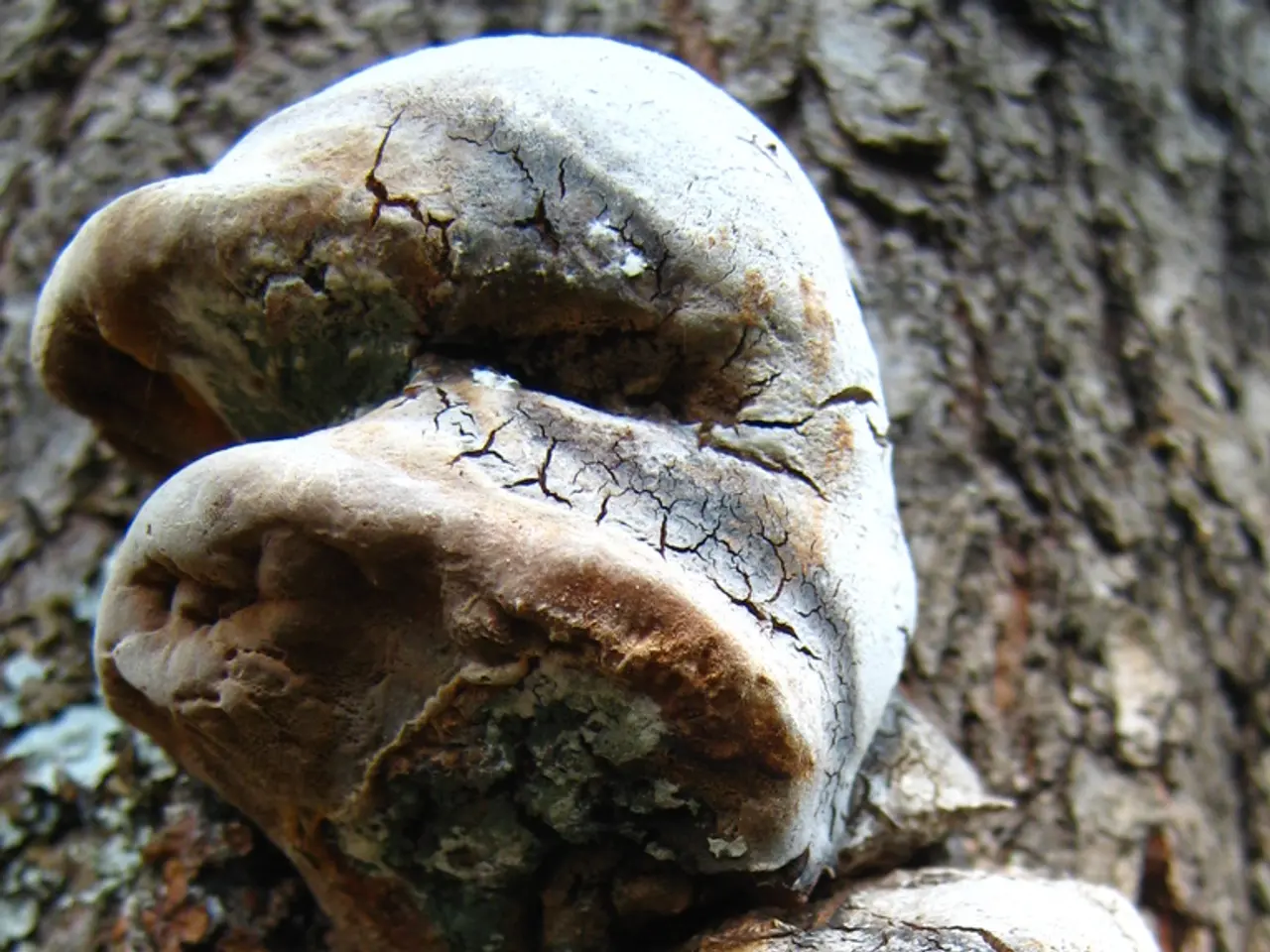Mold Allergies and their Impact on Persistent Sinus Infections
Mould, a type of fungus, can be a common allergen for many people, causing chronic sinusitis and other health issues. This article aims to provide a comprehensive guide on preventing mould growth at home to avoid potential health risks.
Preventing mould growth is crucial in avoiding chronic sinusitis, a condition characterized by nasal passages and sinuses becoming inflamed and swollen for 12 weeks or longer. Repeated or prolonged exposure to mould can lead to ongoing sinus inflammation, increasing the risk of developing chronic sinusitis.
Mould can enter your home via various means, such as attachment to clothing and pets, or through open doorways, windows, vents, heating and air conditioning systems. Common household moulds that can trigger allergies and increase the risk of chronic sinusitis include Stachybotrys chartarum (black mold), Aspergillus, Penicillium, and Cladosporium. These moulds thrive in moisture-rich, dark environments such as bathrooms, basements, kitchens, HVAC systems, and attics.
Symptoms of chronic sinusitis related to mould allergies include a blocked or runny nose, green or yellow mucus, facial and/or dental pain, reduced sense of smell, high temperature, headaches, mouth breathing, and bad breath. Evidence of an allergic reaction, nasal polyps, eosinophilic mucus, positive fungal stain, Charcot-Layden crystals, and CT scan results can be used to diagnose chronic sinusitis related to mould allergies.
To prevent mould growth, it's essential to maintain a dry and well-ventilated home. This includes using exhaust fans in the kitchen and bathroom to allow air to vent outside of your home, fixing any leaks around the home, keeping humidity levels low by using an air-conditioner or dehumidifier, and quickly and fully drying out the home after a flood.
When it comes to cleaning, using mould-killing products is crucial, especially in the bathroom. It's also important to remove or replace any soaked items that cannot be dried immediately and to use mould inhibitors before painting your walls. If you are sensitive to mould exposure, it's necessary that someone not at risk cleans it.
Mould growth is more likely to occur during winter due to the wet and damp conditions. Therefore, maintaining good airflow through the home and keeping a close eye on potential mould growth spots is crucial during this season.
In conclusion, mould allergens can lead to chronic sinus inflammation and increased sinus infection risk when inhaled over time. By following the tips provided, you can significantly reduce the risk of mould growth in your home and protect yourself and your family from the potential health issues associated with mould allergies.
[1] Mayo Clinic. (2021). Chronic sinusitis. Retrieved from https://www.mayoclinic.org/diseases-conditions/chronic-sinusitis/symptoms-causes/syc-20351642
[2] ASTHMA UK. (2021). Mould and damp. Retrieved from https://www.asthma.org.uk/advice/triggers/indoor-triggers/mould-and-damp/
[3] American Academy of Allergy, Asthma & Immunology. (2021). Mold Allergy. Retrieved from https://www.aaaai.org/conditions-and-treatments/library/allergy-library/mold-allergy
[4] Cleveland Clinic. (2021). Chronic sinusitis. Retrieved from https://my.clevelandclinic.org/health/diseases/16064-chronic-sinusitis
[5] Centers for Disease Control and Prevention. (2021). Stachybotrys chartarum (black mold). Retrieved from https://www.cdc.gov/mold/stachy.htm
[5] Centers for Disease Control and Prevention. (2021). Mold. Retrieved from https://www.cdc.gov/mold/mold_info.htm
- Chronic sinusitis, a distressing condition with symptoms such as nasal blockage, green/yellow mucus, and facial pain, can persist for 12 weeks or more, and repeated exposure to mould exacerbates this risk.
- Similarly, chronic kidney disease, a type of chronic illness, necessitates mental health care, along with physical health concerns, demanding assessments in health-and-wellness, therapies-and-treatments, and nutrition to maintain overall well-being.
- Just like mould thrives in humid, dark settings, skin-care products containing harmful chemicals can increase the risk of skin irritations, demanding awareness in choosing quality products for mental-health and overall fitness-and-exercise.
- Mental health professionals often recommend CBD for managing various medical-conditions and chronic-diseases due to its anti-anxiety and anti-inflammatory properties, making it an integral part of a comprehensive treatment plan.
- Science continues to uncover the connection between specific medications and increased risks for chronic-diseases, prompting medical-research agencies to refine drug development approaches to balance effectiveness with side-effect profiles.
- The American Academy of Allergy, Asthma & Immunology states that a significant number of mould types, such as Stachybotrys chartarum (black mold), Aspergillus, Penicillium, and Cladosporium, can worsen allergies and trigger chronic sinusitis cases.
- According to the Centers for Disease Control and Prevention, it is essential to incorporate fitness-and-exercise, mental-health care, skin-care routines, and a balanced nutrition plan to maintain optimal health, ensuring an overall heightened quality of life.




